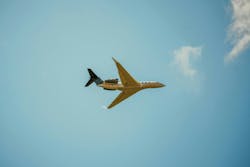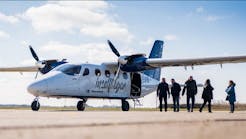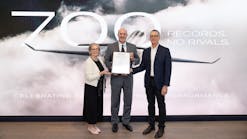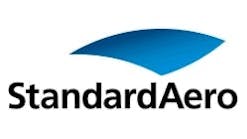David Gitman, President of private jet charter company Monarch Air Group, illuminates this topic to provide clarity to present and future private aviation passengers in the midst of a recently passed law protecting the identities of aircraft owners and passengers.
The tracking of aircraft, especially private jets, is nothing new; aircraft data has always existed. But advances in technology, an increasing interest in celebrities’ and HNWIs’ lifestyles, and climate change have made it a hot topic.
Flight tracking services use ADS-B transponders, GPS, and satellite tracking to collect data about aircraft activity. Air traffic controllers use ADS-B to track an aircraft’s position, and operators know their aircraft’s position at any given time. If there are any flight issues, diversions can be made quickly and efficiently.
ADS-B was never intended for people to stalk or harass those who use private jets, but it has become more of an issue and a safety and security concern for some. While a handy tool is now available to all, it also offers significant risks as private data is shared and not always used for the right reasons.
In recent years, there has been a furor among private jet owners who wish their travel information to remain private. This can also be argued based on security rather than personal privacy. However, it has also been used against private jet owners in terms of public knowledge of the amount of carbon emissions used by operating their private jets. In their favor, President Biden passed a new law that allows private jet owners to travel in privacy.
The new law expands upon programs that the Federal Aviation Administration (FAA) has already implemented to reduce the tracking of private jet flights. It allows aircraft owners to have their data withheld from public sites. They can fly under a temporary aircraft registration and choose to block information, except when required by law.
Previously, private jet information was accessible because all US aircraft had to be registered with the FAA’s civil registry. This means that the aircraft registration and owner information are available and transparent and can be easily tracked anywhere. The only other option was to register the aircraft under a shell company or LLC to disguise the actual owner of the plane.
However, the FAA makes monitoring or tracking private jets and their owners’ usage much more difficult. While there are numerous ways in which aircraft information and flight details can be concealed from public view, probably the most efficient to avoid tracking by owners is pursuing a charter flight, as charter aircraft do not publish their passenger’s names to anyone except the authorities.
The Technology Behind Flight Tracking
The Limiting Aircraft Data Displayed (LADD) program enables aircraft owners or operators to have flight data filtered from distribution via the FAA System Wide Information Management (SWIM) data feed or filtered from public display by websites participating in the program.
Any vendors that subscribe to the SWIM data feed are bound by a Data Access User Agreement to filter any participant of the LADD program from aircraft and flight data from the public arena. In short, the program allows owners to request that the FAA withhold information such as call signs or flight numbers from flight tracking websites.
Another initiative the FAA offers to protect privacy is the Privacy ICAO Aircraft Address Program (PIA), which limits the availability of real-time ADS-B position and identification information of a specific aircraft. It requires that the aircraft be US registered, have a third-party callsign, be equipped with 1090 MHz ADS-B, and fly within a US-managed flight region. The aircraft can be assigned a temporary ICAO number, which blocks flight information that is broadcasted among encrypted aircraft transponders.
Under the new law, PIA applicants can now travel internationally, whereas before, it was only applicable to the US. It will also reduce the amount of identifying information that becomes public regarding aircraft details and flight information. Also, owners can cite ‘a safety or security need’ and allow them to censor identifying information.
Room for Improvement
LADD and PIA prevent information about private jets (if owners participate in the program, and both are recommended) from being posted on flight tracking websites such as Flight Aware and FlightRadar24. However, this is only partially foolproof. Non-FAA third parties can still find out some information.
An example is software like ADS-B Exchange, which collects information from receivers worldwide to present real-time data. Non-encrypted ADS-B transponders can capture aircraft information, such as airspeed, altitude, and flight details. These transponders show the aircraft’s location and can be broadcast on the airwaves.
In conclusion, private jet owners will no doubt be happy about the new law and FAA programs that help them stay private, but there does need to be a balance of transparency and privacy. It might be the case that private jet owners and their aircraft cannot completely disappear from the public eye. Still, the FAA’s commitment to privacy and, indeed, the new law will undoubtedly allow private jet owners to travel more in privacy than they have been able to before – it’s called private aviation for a reason, right?





